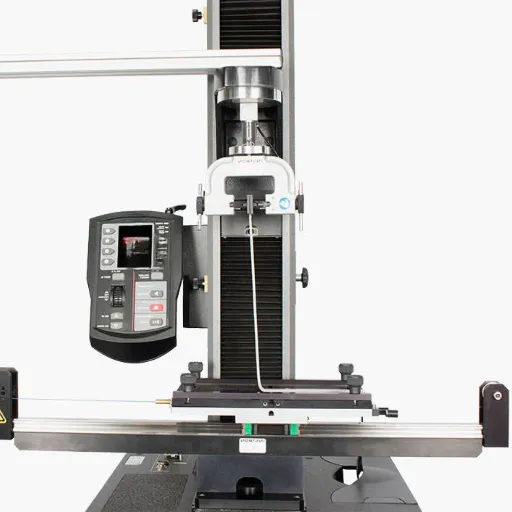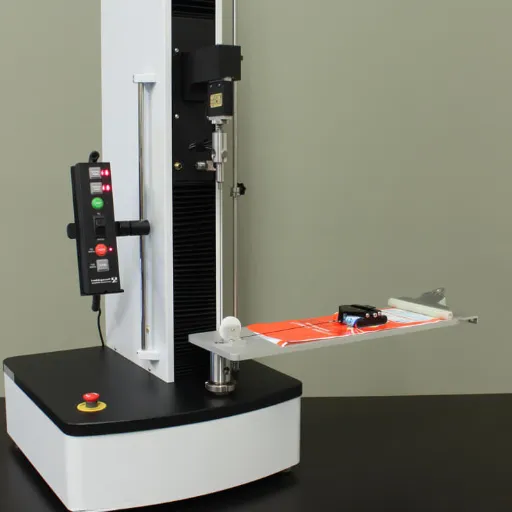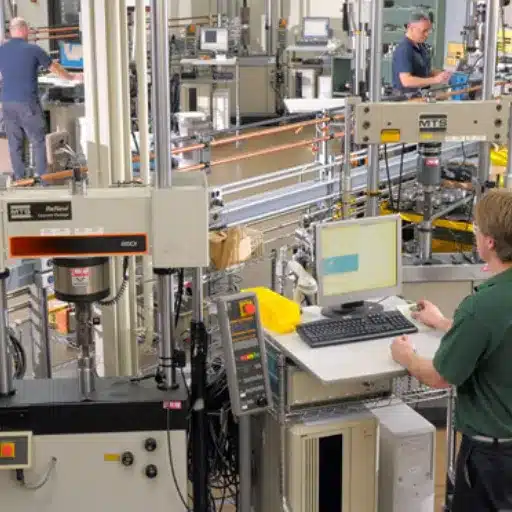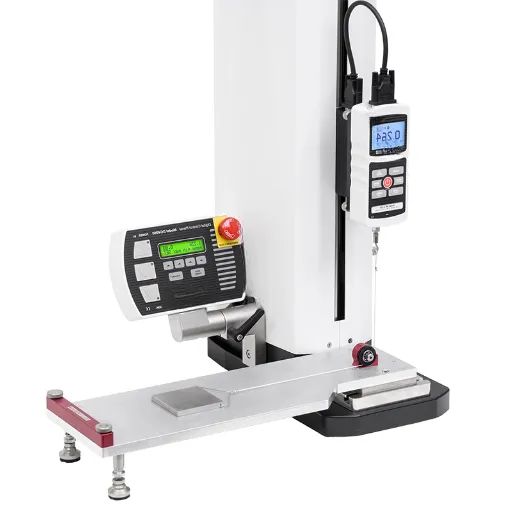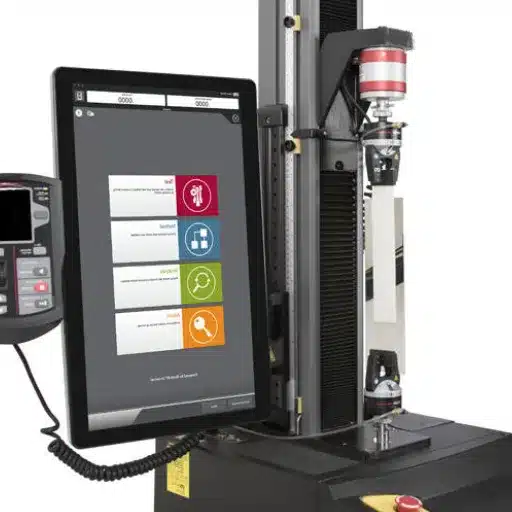Having knowledge of the mechanism of failure of a material is critical to designing a structure that is truly robust and reliable in different industrial applications, including aerospace, automotive, and construction. At the heart of this investigation lie fracture toughness and stress fractures: basic notions of how a material responds to extreme stresses and subsequent crack propagation. These test methods are delineated in this blog to explain the basic principles of fracture testing to ASTM test methods and other more general ones for measuring fracture toughness and stress fractures. The reader would come to know why such tests are done to judge how a material behaves on its feet, to eliminate any possibility of starvation by sudden failure, and for innovations in material science. Engineers, researchers, or anyone curious about the integrity of materials will find this deep and practical account of fracture mechanics and their applications useful.
Introduction to Fracture Testing
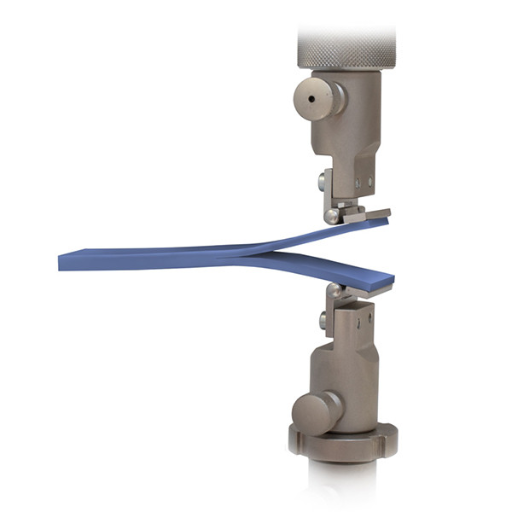
Fracture testing is an important procedure to assess the ability of a material to resist stress and crack propagation. A sample is tested under controlled conditions to evaluate important parameters such as fracture toughness and mode of failure. This testing is crucial to ascertain the limits of the material performances and safety in structural applications, as well as in developing better materials. Among the widely used engineering tests are standardized tests for strength such as the Compact Tension (CT) test and Three-Point Bending test.
Definition of Fracture Testing
Testing for fracture constitutes a rigorous and systematic way of studying mechanical behavior of materials under stress with specific respect to resisting crack propagation and ultimate failure. It considers parameters of utmost importance such as fracture toughness (K_IC), crack growth rates, and stress intensity factor thresholds. Recent developments, together with computational modeling and machine learning, and insights of data-driven nature coming from the scientific community, hint that fracture testing is becoming increasingly predictive. Experimental results fed into algorithmic simulations now enable engineers to handicap the performance of materials more accurately in a wide variety of plausible real-world conditions. This kind of enhanced predictive capability is required in fields like aerospace, automotive, and civil engineering, which demand the highest standards of reliability for safety margins.
Importance of Fracture Toughness
Fracture toughness is a fundamental material property that measures the resistance of a material to crack propagation under stress. The property plays an essential role in engineering applications where structural integrity and reliability are of chief concern. High fracture toughness guarantees that a material will resist imperfections such as micro-cracks or notches under dynamic or complex loading from catastrophic failure and is needed in the design of components in aerospace, where materials are subject to extreme stress and operating conditions, or infrastructure and energy systems where long-term durability is a influencing factor. Engineers use precisely quantified fracture toughness as a means to select materials so as to improve performance and ensure compliance with stringent safety standards. Detailed testing methods such as ASTM standards for fracture mechanics are in use to provide the means to bring this property into the realm of design.
Applications in Various Industries
1.Aerospace Industry: Fracture toughness is of major importance in aircraft and space component development; where materials are subjected to extraordinary stresses and temperature fluctuations through time, causing fatigue to accumulate, thus testing to destruction.
2.Automotive Industry: For parts like brake systems, engine components, and crash-resistant structures, high-performance materials provide superior fracture toughness to assure safety and reliability.
3.Energy Sector: Be it turbines for renewable energy systems or pipelines for oil and gas, fracture toughness is the basis for structural integrity against high pressure, temperature cycles, and corrosive environments.
4.Civil Engineering and Infrastructure: Bridges, buildings, and large-scale infrastructure projects require materials of dependable fracture toughness to withstand dynamic loading, seismic activity, and prolonged wear.
5.Manufacturing and Tooling: Richter-tough materials are essential for cutting tools, molds, and heavy machinery, so as to ensure their precision and durability when under high stress during operation.
Key Methodologies in Fracture Testing
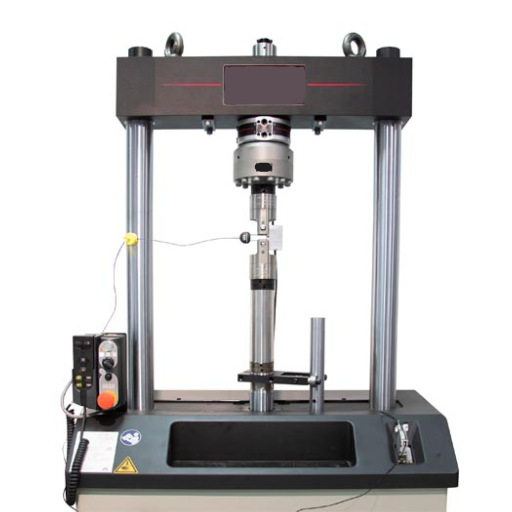
It uses a plethora of standardized techniques to check somehow in stress: like fracture toughness, propagation of crack, or modes of failure. The central testing methods contain:
1.Linear Elastic Fracture Mechanics (LEFM): The method predicts material behavior from the stress intensity factor (K) and is applied to brittle materials where elastic deformation is predominant. It helps find the stresses at which a crack actuates or actually propagates.
2.Crack Tip Opening Displacement (CTOD): CTOD is a measure of how far the crack tips open under stress. It is commonly used for ductile materials and measures their resistance to plastic deformation towards failure.
3.J-Integral Testing: This test determines fracture toughness for materials under elastic-plastic conditions, where the J-integral gives a full accounting of the release of energy and the resistance to crack growth.
4.Fatigue Crack Growth Rate Analysis: The rate at which a crack grows under cyclic loading is examined. This is a very important method for assessing long-term performance under repetitive stress loading conditions.
5.Dynamic Fracture Testing: Dynamic fracture behavior at high loading rates is studied for materials subjected to high-speed or impact-type forces, ensuring the safe usage of materials in critical high strain-rate regimes.
By employing these methodologies, engineers can generate true material behavior models and verify designs, thus saving industries from structural collapse.
Types of Fracture Toughness Tests
The types of fracture toughness tests include Plane Strain Fracture Toughness (K_IC), J-Integral Testing (J_IC), Crack Tip Opening Displacement (CTOD), and R-Curve Testing.
|
Test Type |
Key Feature |
Application |
Parameter |
Units |
|---|---|---|---|---|
|
K_IC |
High strain |
Thick materials |
Toughness |
MPa√m |
|
J_IC |
Ductile |
Non-linear cracks |
Energy |
kJ/m² |
|
CTOD |
Tip opening |
Structural welds |
Displacement |
mm |
|
R-Curve |
Resistance |
Crack propagation |
Energy |
Variable |
Each test comprehensively evaluates critical material properties under specific conditions, aiding in material selection and safety assurance.
Procedures for Conducting a Fracture Test
1.Specimen Preparation
Select an appropriate specimen geometry (e.g., compact tension, single-edge notched bend) based on the test standard and material type. The specimen is machined to precise dimensions with accurate notching. Usually, ASTM E399 or ASTM E1820 standards are followed depending on the fracture toughness parameter being measured.
2.Notching and Pre-cracking
A sharp notch is introduced, followed by pre-cracking, if applicable, by fatigue loading. Pre-cracking is a critical operation that accurately controls the crack tip geometry to achieve valid and reproducible results.
3.Test Setup
Install the specimen into the test machine while taking care of alignment to avoid secondary stresses. Attach the required instrumentation such as crack opening displacement (COD) gauges or extensometers for measurements at the crack tip.
4.Loading Procedure
Proceed to subject the specimen to controlled load in accordance with the test method, and identify physical conditions pertinent to the specimen type being tested (monotonic for K_IC and cyclic for R-Curve test). Loading rates should be adequate according to the standard to minimize dynamic effects and to allow quasi-static conditions.
5.Data Collection
Information on load-displacement, crack length, and other parameters are to be collected real-time. Proper synchronization principles should take place and data gathering has to be precise, mainly when key parameters such as J_IC and crack resistance curve are to be derived.
6.Analysis and Validation
Analyze the collected data to calculate fracture toughness (K_IC, J_IC, or CTOD) according to standard formulas or methodologies/software. Validate the results to assure compliance with the acceptance criteria set for applicability. Consider the influence of parameters such as precision in the crack length measurement and specimen size constraints.
7.Documentation and Reporting
A detailed report of the specimen geometry, material properties, test set-up, loading conditions, and fracture toughness value shall be prepared. The report shall contain raw data, graphs, and notes gathered during testing for traceability and further analyses.
Through this standardization, the fracture test supplies reliable data that would prove crucial in a structural integrity assessment and material suitability in the most critical applications.
Interpreting Fracture Test Results
In my interpretation of fracture test results, my focus lies mainly on principal parameters such as fracture toughness (K_IC), which represents the material’s propensities to resist and develop a crack. These results are all compared with the relevant standards to judge the validity of the results obtained. The fracture surfaces are examined under a microscope to establish the failure mode and any possible material defect. The data must correspond with the load-displacement curves and the stress intensity factor calculations in order to validate the outcome. Furthermore, this test report allows findings to be cross-examined with theoretical considerations and application-based conditions. This provides for all-encompassing considerations and solidly conclusive output as to material behavior.
Fracture Toughness in Composite Materials
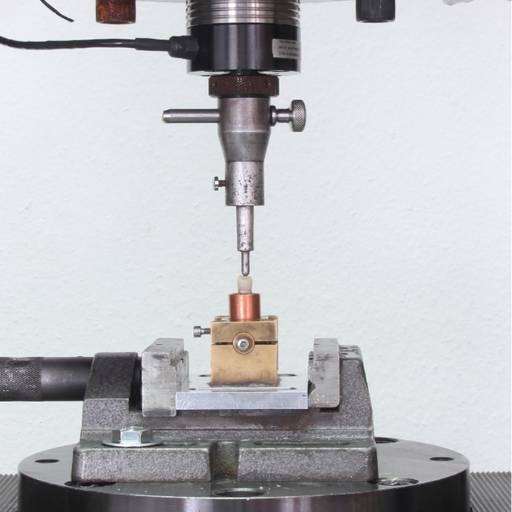
The fracture toughness in composite materials is the property of a material by which it can stop the crack from propagating further with the applied stress. Composité machine fracture toughness compared for integrity and performance; they are required for tough applications such as aerospace and automotive. Factors affecting fracture toughness include fiber orientation, matrix properties, the quality of bonding at the interface, and also voids or other defects present in the materials. Typical methods of assessment include those that employ compact tension (CT) specimens or end-notch flexure (ENF) specimens to characterize fracture. The test results are then used to improve composite designs for specific applications.
Understanding Composite Material Behavior
Composite materials have a distinctive behavior due to the synergistic combination of their constituents, which usually consist of the reinforcing material while the other element acts as a matrix. These materials are designed to maximize properties like strength, stiffness, and durability while minimizing weight. Composite behavior is inherently anisotropic, which means that their mechanical properties can change greatly with direction of applied loads. Fiber orientation, fiber volume fraction, and fiber-matrix interface bonding quality are some of the primary factors that influence such behavior.
Alongside experimental mechanical testing, advanced computational methods such as finite element analysis (FEA) are used to predict and study the behavior of composites subjected to certain loads and environmental conditions. Long-term behavior can be addressed by considering thermal expansion coefficients, moisture absorption, and fatigue resistance among other factors. In other words, the knowledge enables engineers to tailor composites for particular applications to optimally balance performance and material efficiency.
Impact of Fracture Toughness on Composite Performance
Fracture toughness is key to directly governing the reliability and maintenance of composite materials under heavy-duty applications. From my study, clearly, fracture toughness governs the ability of a composite to resist crack propagation under stress to maintain structural integrity. Among the main factors affecting fracture toughness were considered the matrix materials, fiber-matrix adhesion quality, and microstructural flaws. By optimizing these parameters with modern manufacturing techniques and material formulations, the performance of composites and their longevity can be greatly enhanced. This understanding then feeds into making design decisions in line with the specific mechanical and environmental requirements of a given application.
Testing Methods Specific to Composites
Common testing methods for composites include tensile testing, compression testing, flexural testing, impact testing, fatigue testing, and interlaminar shear testing.
|
Test Type |
Purpose |
Key Metric |
Condition |
Equipment |
|---|---|---|---|---|
|
Tensile Test |
Assess strength |
Tensile mod |
Ambient/Env |
Universal |
|
Compression |
Measure resist |
Compressive |
Load rate |
Compression |
|
Flexural Test |
Evaluate bend |
Flex strength |
Span-to-depth |
Testing jig |
|
Impact Test |
Test toughness |
Energy absorb |
Drop/Charpy |
Impact rig |
|
Fatigue Test |
Study durability |
Cycle life |
Repeated load |
Fatigue rig |
|
interlaminar shear testing |
Analyze layers |
Shear stress |
Cross-section |
Shear tester |
Stress Fractures: Causes and Implications
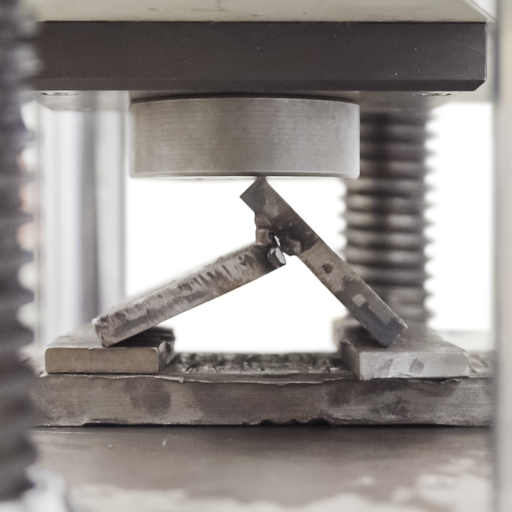
The material stress fractures occur when cyclic loading repeats or sustained stresses bearing upon the material exceed its endurance limit above that capacity of the materials to relieve stress, leading to a gradual possible accumulation of microscopic cracks. These cracks grow and merge over time, culminating in the gross failure of the structure. Cyclic mechanical loads, environmental effects like temperature variation, and even material intrinsic defects are the usual culprits. Implications of stress fractures include compromised structural integrity, shortened service life, dangers to safety, which need to be satisfactorily rated in design, through maintenance, or by selection of materials.
What is a Stress Fracture?
A stress fracture in materials stands for a gradual weakening or cracking introduced by repetitive mechanical loads, cyclic stresses, or environmental fluctuations beyond a particular material endurance limit. Generally, these micro-cracks begin in areas with a high concentration of stresses, such as at an edge, a joint, or points where defects exist in the material, i.e., voids or inclusions. These cracks grow over time and can lead to failure.
According to more recent studies, the material composition, grain structure, and surface treatments all play a vital role in stress fracture susceptibility. The fatigue studies also ascertain that metal alloys, composites, and ceramics all act differently when subjected to different cyclic loading scenarios. Typical treatments for detecting and correcting stress cracks so they can remain useful and safe include thermal treatments, improved QC during fabrication, and periodical inspection by NDT methods, e.g., ultrasonic or radiographic methods.
Factors Contributing to Stress Fractures
1.Cyclic Loading: Repeated loading with fluctuating forces operates to build fatigue and initiate microscopic cracks that grow into stress fractures.
2.Material Defects: Flaws like voids, inclusions, or microcracks in the material serve as stress concentrators and hence reduce considerably the capacity of the material to resist stress.
3.Environmental Factors: Conditions involving extreme changes in temperature, humidity, or corrosiveness degrade material properties while fast-forwarding the evolution of stress cracks.
4.Improper Manufacturing Processes: The ones resulting in residual stresses from uneven cooling, lack of proper heat treatments, and so forth, eventually soften the material in structural integrity.
5.Overloads: Unrestrainedly applying stresses or strains beyond design levels of the material would result in an immediate failure-case or setting the scene for stress fracture formation over the course of time.
Preventive Measures in Engineering Design
Fundamentally, preventive measures in engineering design are all about planning, materials choices, and structural design optimization. First, I would like to transition into the use of good-quality, durable materials selected according to the specific load conditions that might produce failures when the materials are subject to fatigue or stress. Then, incorporating advanced simulation methods such as the finite element analysis allows one to model stress distribution more precisely and, hence, see weak points at an early stage. A proper maintenance schedule combined with real-time monitoring systems could be essential tools in maintaining the structural integrity of engineering works against the risks which have to be managed before real destructive incidents take place. The engineering designs, having implemented these measures, thus gain reliability and safety, making the unforeseen stress problems less likely to occur.
Latest Advancements in Fracture Testing Technology

Fracture testing technology has been seeing recent advancements, from the integration of digital tools for modern fracture testing to new materials analysis methods, all with a common goal of achieving maximum precision and efficiency. Techniques such as Digital Image Correlation (DIC) offer high-precision measurement of strain and crack propagation in a non-contact mode, thus giving real-time information useful for a thorough stress analysis. Another innovation is in micro-CT scanning method development, which involves studying the fracture patterns and composition of materials at the microscopic scale. These methods also allow for the automation of testing equipment, which reduces the testing time while preserving quality. Taken together, these advancements greatly increase the engineering application’s limits to predictability and reliability for fracture testing.
Digital Imaging Techniques
Digital imaging techniques have tremendous importance in contemporary engineering and materials testing sectors. The high-speed cameras are used across the board during stress tests to record real-time data during the formation and propagation of cracks. Digital Image Correlation (DIC) is a notable technique that utilizes advanced algorithms to measure strain distribution with high precision by comparing several resulting images. Infrared Thermography offers a non-destructive testing technique that detects temperature variations associated with defects lying beneath the surface in a material. These new methods thus heighten both precision and depth in fracture analysis, aiding engineers in predicting and so averting actual occurrences of failures.
Simulation Tools in Fracture Analysis
My investigations on the best possible materials reveal that simulation tools are critical in furthering fracture analysis by realistically modeling and predicting material behavior under stress. One of the many methods is Finite Element Analysis (FEA). It is probably the most widely used method to carry out stress and strain evaluation within complex geometries. Algorithms, on the other hand, are used by the computational fracture-mechanics solutions to simulate crack propagation, giving an insight on the points of failure. Moreover, software platforms like Abaqus and ANSYS take into account materials properties, further geometric aspects, and environmental factors to provide exhaustive and reliable fracture analysis. These services remain features of the engineer in the pursuit of designing stillried and safe structures.
Future Trends in Fracture Testing
Future trends in fracture testing shall be centered around digital, computational techniques that allow greater precision and efficiency in analysis. The development of techniques includes the implementation of machine learning algorithms for prediction of crack propagation and the behavior of materials under several conditions. The accreditation for digital image correlation-type monitoring techniques is ongoing, indebted to the capability of these techniques to analyze specimens non-invasively and in real time. Furthermore, with additive manufacturing’s arrival, the production of testing specimens gets transformed and now is capable of representing more complex geometries that closely resemble real-world scenarios. All these developments, joined by the progressive evolution of multi-physics simulation tools for offerings, steer fracture testing into an even more accurate, efficient, and industrially observant road.
Reference Sources
- Review of the fracture toughness approach – Discusses the reliability of fracture toughness tests and intrinsic flaws in materials.
- On the fracture toughness of advanced materials – Explores the limitations of materials based on their fracture resistance.
- Measuring fracture toughness in biological materials – Examines fracture toughness in biological materials, including examples like bamboo.
- Statistical distributions of toughness and fracture stress for homogeneous and inhomogeneous materials – Provides a statistical analysis of toughness and fracture stress, addressing scatter in toughness values.
Frequently Asked Questions (FAQs)
Q:What exactly is a Fracture Toughness Test?
A:The fracture toughness test measures the ability of a material to withstand fracture in the presence of a crack. It examines how the material responds to stress concentration at the crack tip and expresses its ability to resist crack propagation under various loading conditions. The results from fracture toughness testing are vital for structural design considerations involving materials.
Q:How is the Plane-Strain Fracture Toughness Tested?
A:Using standard test procedures, plane-strain fracture toughness is assessed by loading a test sample with an existing crack until crack propagation occurs. The stress state at propagation is then evaluated so that the toughness is calculated from the energy release rate and specimen size. This process is imperative for materials expected to sustain elevated stresses from service.
Q:What Materials are Tested for Fracture Toughness?
A:Fracture toughness tests can be applied to a variety of materials, including metals, ceramics, and composites. Different types of fracture mechanisms may apply, with some samples exhibiting brittle fracture and others more ductile fracture, and distinct testing procedures need to be established for each of the material systems to measure their fracture parameters correctly.
Q:What is the Importance of the Strain Energy Release Rate?
A:The rate of strain energy release is an essential aspect that comes into the analysis of the fracture process. It implies the energy becoming available for the crack to propagate through a unit area of the crack surface and is thus directly associated with the fracture toughness of the material. Higher values imply a bigger chance of crack growth under applied loads.
Q:What are the Basic Considerations in Fracture Mechanics?
A:Basic principles of fracture mechanics study the growth of cracks in materials. This embraces the study of stress concentration, crack-tip stress fields, and the dependence of fracture on loading conditions. Usually, linear-elastic fracture mechanics shall apply for brittle materials, whereas for more ductile materials more complicated models may be needed.
Q:What is the Difference Between Mode I and Mode II Fracture Toughness?
A:Mode I fracture toughness refers to crack opening under tensile stress, while Mode II fracture toughness refers to in-plane shear loading. These two load conditions require different testing approaches and have different implications on material performance. In-depth knowledge of both will assist in the accurate prediction of materials’ behavior in real applications.
Q:How Does One Use Screening Tests in Fracture Toughness Evaluations?
A:Screening tests are used as a quick test for fracture toughness of materials. They help to identify material candidates for extensive testing such as the probability of fracture under certain conditions. Also, various screening tests such as Charpy and Izod measure the impact toughness of the sample, which also gives a hint for the overall material behavior.
Q:What Effect Does Stress State Have on Fracture Toughness?
A:The stress state of any given material has a huge influence over its fracture toughness. The different modes of loading tend to change the way a material may fail, as well as the point of time at which this failure can occur. Hence, the knowledge of the state of stress is necessary for the individual involved in the design of components that must withstand loads experienced under operation without undergoing failure.

